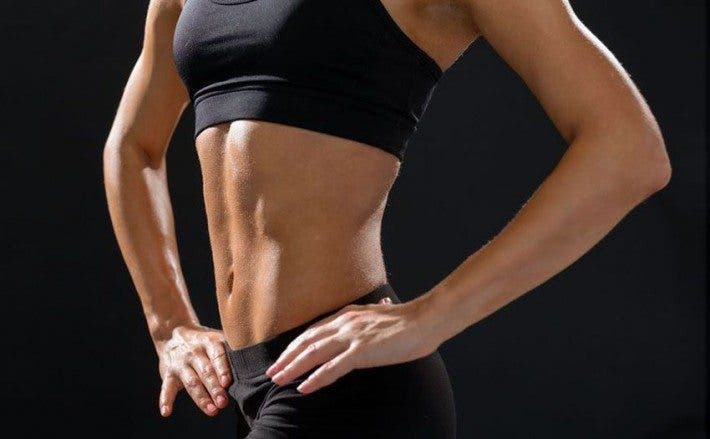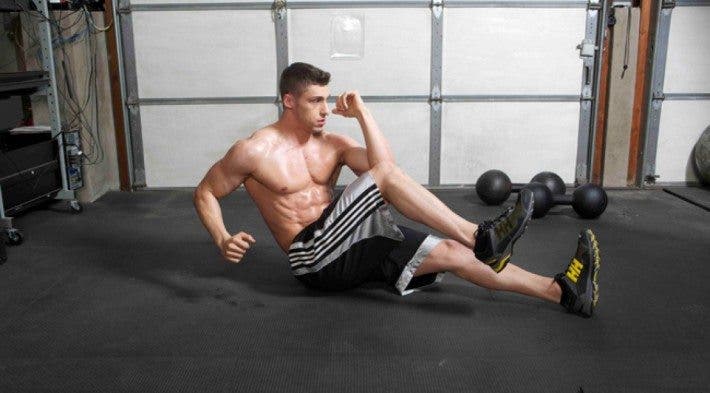If you want to exercise the abdominal muscles , the exercise that you surely have in mind to introduce in your training program is the abdominal crunch , as this and its many variations have always been the main exercise in any training program for this body region. This exercise involves the dynamic flexion of the spine in the sagittal plane and serves to increase the strength and development of the abdominal muscles, mainly the rectum and obliques.
In recent years , however, this exercise has been questioned by some fitness professionals, as they believe that the spine has a finite number of flexion-extension cycles, and that if we exceed this limit we will accelerate the onset of a possible disc injury. Therefore, those who defend this theory state that the spinal flexion should be maintained to perform activities of daily life such as bending over to tie shoes instead of “wasting it” in the crunch or other abdominal exercises based on the spinal flexion. . On the opposite side are those who believe that there is an alarming discrepancy between laboratory results and what happens in sports facilities, with a lack of scientific evidence to show any damage to the spine.
Below we will detail what science says about it, but we will also see the limitations that we find when we want to extrapolate the results obtained in the laboratory to training in the gym. In relation to the latter, I hope you draw your conclusions about whether the abdominal crunch is as harmful to our spine as some physical training professionals make us see.

Scientific evidence
To date, there have been many studies to elucidate the biomechanics of the spine and its impact on the pathophysiology of intervertebral discs, both with animals and humans, either in vivo or in vitro. In vitro studies have pointed to repetitive lumbar flexion as the primary cause of herniated disc (protrusion of disc material towards the nerve root with rupture of the annulus fibrosus) because evidence shows that this type of pathologies progressively progress from the inside to the outside through the migration of the nucleus pulposus towards the weakest area of the annulus, which is the posterolateral portion.
Most in vitro studies of spinal biomechanics applicable to abdominal crunch have been done with cervical models of pigs. These models are attached to appliances that apply continuous compressive loads in combination with cervical flexion and extension. From 4400 to 86 400 cycles have been done, with compressive loads equivalent to about 1500N, so it can be compared with the load our spine is subjected to during abdominal crunch , which according to Axler and McGill is about 2000N . In each of the aforementioned studies, most of the discs experienced a complete or partial herniation, mainly in the posterior area of the disc. This suggests a cause-effect relationship between spinal flexion and disc injury.
Although these studies appear to support the belief in the potential risk posed by repeated spinal flexion, there are several problems when extrapolating the findings from a laboratory study to the gym.

Differences between the laboratory and the gym
The first and most important is that the studies were carried out in vitro , so there is no action of the musculature , something that happens during any spinal movement. The vertebrae and adjacent structures, like any living organism, are remodeled when they are subjected to a certain stress. The deformation of the cellular tissues is followed by a corresponding increase in the rigidity of the matrix, which in turn helps to resist future deformation. The vertebrae and discs are no exception and are adaptively strengthened when exposed to an exercise program progressively. Dead tissue , on the other hand, does not have this remodeling capacity.
Another important point to consider if we want to correctly interpret the data from any in vitro study about the loads submitted in the spinal movement cycles, is the compromise of the natural flow of fluids . Van der Veen et al. found that in the movement of the lumbar spine of the pig there was an exit of fluids during loading, there was no entry of them during the unloading phase, due to the decrease in the height of the discs and the differences with the biomechanics of live discs.
In vitro comparisons are also more difficult if we use animal models , because although the structure of the cervical spine of the pig is similar to the human lumbar spine, it has a series of anatomical and physiological variations. The ranges of motion in the spine are smaller in pigs than in humans. These variations are more pronounced in flexion and extension, so they pose another problem if we want to extrapolate results from animal models to humans.
The studies try to simulate a work situation in which the subject flexes for hundreds of repeated cycles and without rest, something that is nothing like any exercise program . Core training routines use a limited number of repetitions and sets, with breaks between them and between training days, so spinal push-up cycles are limited and intermittent. Rodacky et al. found that despite the moderate compression values in the abdominal crunch, there was no loss of fluids, and it even exceeded the Fowler position (position in a semi-sitting situation of about 40º-50º) with respect to the spinal discharge, due to a greater influx of fluids during exercise than in such a static posture.
In an exercise program, there is a recovery of the structures of the spine between one session and another , thus relieving stress and allowing them to be remodeled. Factors such as age, volume, load, intensity and progression in training are involved. Videman et al. found that moderate training load resulted in a lower rate of disc injury than seen at extreme training intensities and in sedentary subjects.
We must not forget the important role played by genetics . Despite the belief that mechanical loading is the culprit for the deterioration and wear caused by disc degeneration, there is an even more important factor in this process. 74% of the differences have been shown to be due to hereditary factors . Battie et al. identified specific genes associated with disc degeneration that accelerates vertebral changes in the absence of repetitive stress. These factors are, for example, the size and shape of the vertebral structures, as well as the biochemical components of the disc that influence its rupture or remodeling. In this regard, I recommend reading the study that Battie et al. performed with 45 male pairs of twins.
The studies in question do not accurately replicate spinal movement during a dynamic lumbar flexion exercise . For example, the traditional abdominal crunch exercise flexes the spine by 30 degrees so that only the head and shoulders lift off the ground, making the spine the region of greatest mobility. Adams and Hutton showed that a reduction of two degrees in spinal flexion, that is from 13º to 11º, caused a 50% reduction in the stress to which the posterior ring and the intervertebral ligaments were subjected. Therefore, both the location and the degrees of flexion of the spine play a very important role in the impact on the anatomical structures.
Although abdominal exercises create compression forces through muscle contractions, they also create intra-abdominal pressure (IAP) . Three-dimensional models predict an 18% reduction in compression forces due to this PIA. Therefore, this IAP can help reduce compression in spinal flexion, unloading and facilitating the absorption of fluids in the discs. As in vitro models do not incorporate this PIA , there is another limitation if we want to extrapolate data to humans.
Nor should we forget the sporting modality that the subject develops . Spinal injuries, including disc injuries, have been shown to occur more frequently in gymnasts, rowers, and football players. Thus, elite athletes may experience more injuries than non-professional athletes. Even so, a direct relationship between spinal flexion and spinal injuries has not been established in these athletes, since they do not only produce spinal flexion movements.

If you want to discover what is the best exercise for abs, get ready for the abdominal exercise that you should do daily, you will notice results from the first day either for aesthetic purposes or even in your physical performance, whatever sport you practice.
